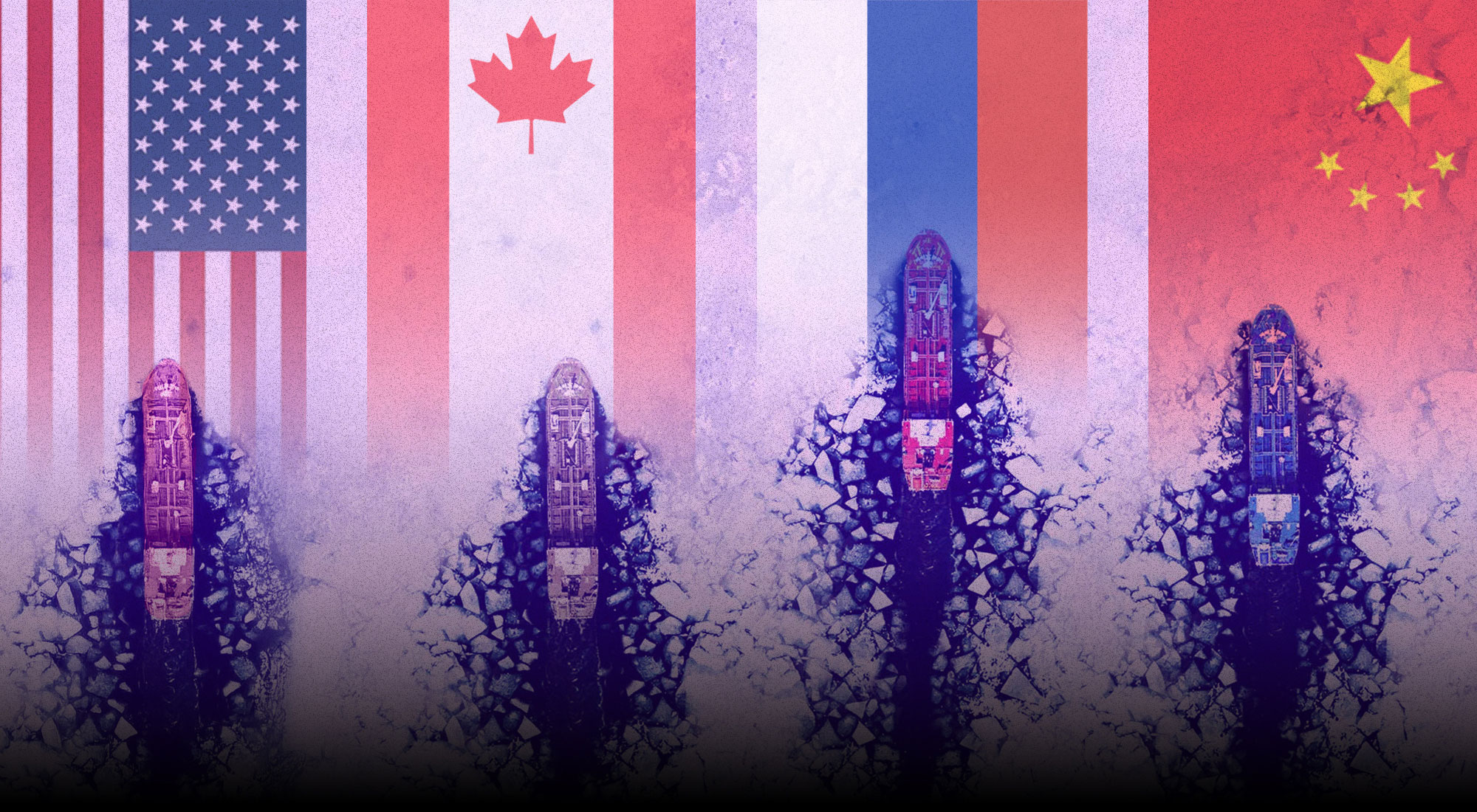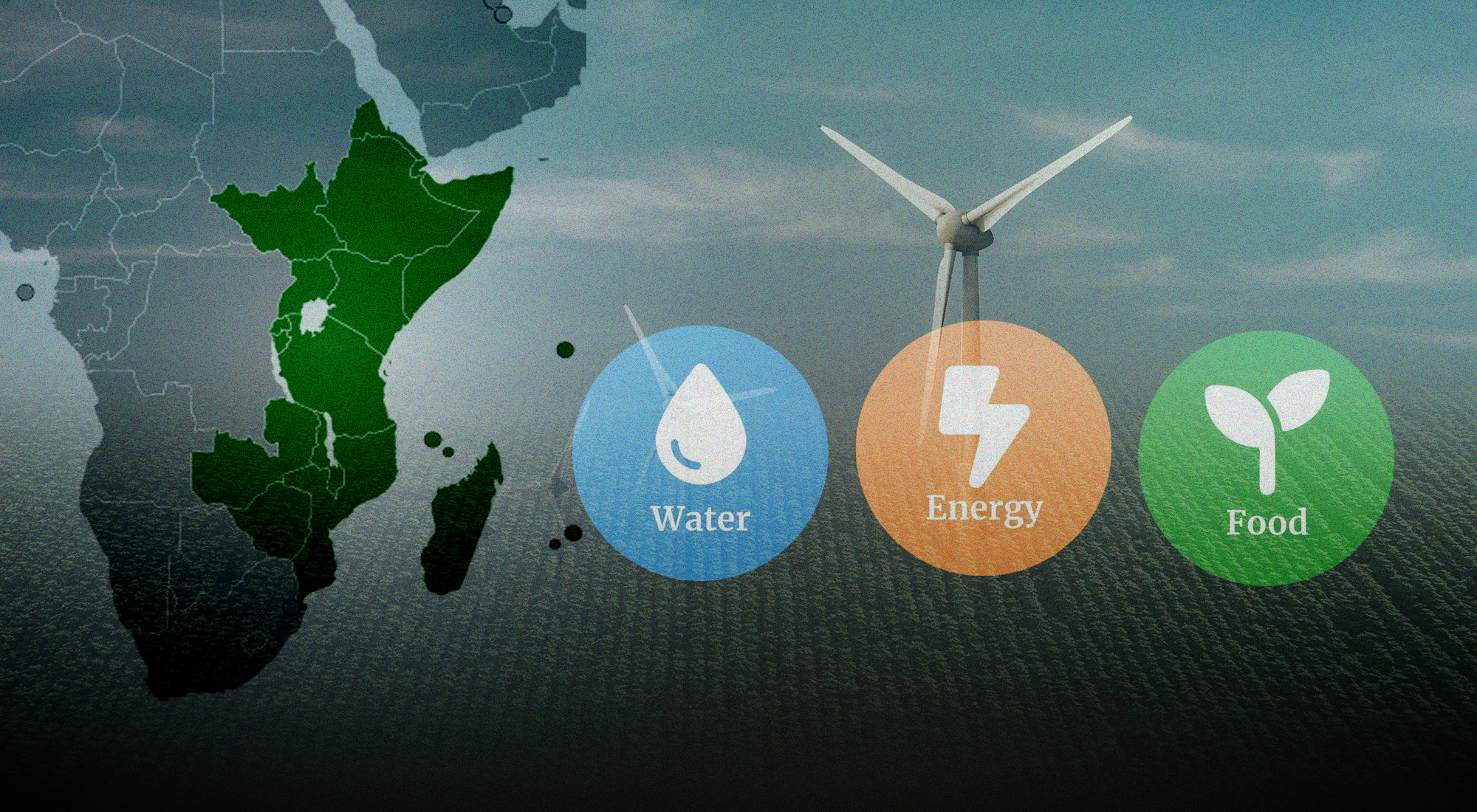Abstract
This paper examines the evolving geopolitics of the Arctic in the 21st century, particularly in the context of climate change, which has accelerated ice melt and opened new maritime pathways to untapped oil, gas, and critical raw materials. It seeks to address the central question: How has the Arctic become an arena of strategic competition among China, Russia, and Canada? The study’s key findings reveal that Nordic states are increasingly caught between competing interests from the United States and China, both seeking to secure access to Arctic resources. However, legal instruments such as the Svalbard Treaty and the United Nations Convention on the Law of the Sea (UNCLOS) contain ambiguities and are not universally ratified, adding complexity to sovereignty claims and resource governance. The legal dimension thus plays a pivotal role in shaping Arctic geopolitics. Furthermore, the ongoing conflict between Russia and Ukraine has intensified concerns over Russia’s militarization of the Arctic, evidenced by the construction of icebreaker fleets and increased strategic activity. In light of these developments, the paper argues that the United Nations (UN) should establish a dedicated committee to address the overlapping claims and propose fair, cooperative solutions for all Arctic stakeholders.
Introduction
Waterways have long been regarded as a cornerstone in the realm of politics, both in ancient and modern history. Strategic canals such as the Suez Canal play a pivotal role in global trade and national revenues. The Suez Canal alone facilitates the passage of approximately 17,000 ships annually, accounting for nearly 8% of global maritime trade.[1] In September 2024, the monthly revenue of the Suez Canal reached US$303 million.[2] From a political perspective, water canals constitute a critical and sensitive geopolitical domain, wherein the riparian or basin countries maintain strategic oversight over canal operations and derive significant benefits through control of maritime trade routes and the imposition of transit fees. Interestingly, the accelerated melting of the Arctic ice has facilitated greater access to untapped natural resources and opened shorter maritime routes between key global markets. Due to rising global temperatures, the Arctic has become the fastest-warming region on the planet, with sea ice diminishing at an estimated rate of 13% per decade. This rapid environmental change has profound implications for global climate systems, resource accessibility, and geopolitical dynamics.[3] Thus, the emergence of new maritime routes, coupled with the potential for significant economic revenues and strategic political dominance, has rendered the Arctic an increasingly attractive and competitive arena for several nations. Therefore, this paper aims to examine how the region has become a focal point of competition among major powers such as Russia, the United States, China, and Canada.
The Arctic’s Rising Strategic and Economic Value
The Arctic was once viewed as a model of peaceful international cooperation. However, in recent years, it has increasingly become a stage for geopolitical competition and political tension. The region comprises eight Arctic states: Norway, Sweden, Finland, Russia, the United States (via Alaska), Denmark (via Greenland), Canada, and Iceland.[4] In addition, thirteen non-Arctic countries, including China, India, and major European powers, hold observer status in the Arctic Council, allowing them to participate in discussions and contribute to Arctic research without voting rights. Understanding the geopolitical dynamics of the Arctic necessitates examining key historical developments, such as those involving the Norwegian archipelago of Svalbard. Following World War I, Norway was granted full sovereignty over Svalbard, formalized through the Svalbard Treaty signed in 1920[5] during the peace negotiations. While Norway was recognized as the sovereign authority, the treaty allowed citizens and companies from all signatory countries—including the United States, Russia, and others—to engage in commercial activities such as coal mining and fishing. Importantly, the treaty also stipulated that Svalbard could not be used for military purposes and that Norway could only collect taxes sufficient to cover administrative costs. Today, Svalbard remains a unique zone of international presence, hosting communities and operations from Russia, the United States, Canada, and other nations.[6] During and after World War II, the Soviet Union engaged in several diplomatic negotiations with the Norwegian government to gain greater influence or shared control over the Svalbard archipelago. The USSR’s primary concern was strategic: it feared the potential for a military threat or invasion originating from the north, particularly through Svalbard, given its location in the Arctic and its proximity to key Soviet territories. Despite these efforts, Norway firmly rejected any proposal that would compromise its sovereignty over Svalbard, reaffirming the principles set forth in the 1920 Svalbard Treaty. Nevertheless, the Soviet Union maintained a significant presence on the archipelago, particularly through active mining operations and settlements such as Barentsburg, which continue to be operated by Russian entities to this day.[7]
Secondly, while the Arctic’s economic potential appears highly lucrative, it is accompanied by a range of complex, multidimensional challenges that must be carefully addressed. According to a 2020 study, one of the major obstacles in assessing the economic dimension of the Arctic lies in the lack of an integrated and adaptable framework. The study highlights that permafrost, snow cover, and sea ice are all closely correlated with the impacts of climate change, creating diverse and uncertain scenarios for future development. These dynamic environmental conditions necessitate a collaborative, interdisciplinary approach—bringing together social sciences, economics, and natural sciences—to develop a comprehensive and resilient planning framework. Only through such cross-sectoral cooperation can policymakers and stakeholders ensure that Arctic economic activities are both sustainable and responsive to the region’s rapidly changing environmental and geopolitical realities.[8] Another significant challenge in the Arctic, particularly in Area 1002 of the Arctic National Wildlife Refuge (ANWR) in Alaska, is the environmental dimension associated with oil exploration and extraction. Before any drilling can take place, the quantity and viability of the oil reserves must be assessed through seismic analysis. Beyond this, substantial infrastructure is required to support extraction activities, including drilling rigs, pipelines, access roads, and housing facilities for workers. The use of slant drilling technology allows access to oil reserves with fewer surface wells. Economically, projections suggest that oil production from this area could generate approximately US$374 billion in revenue, with an estimated extraction and delivery cost of US$123 billion, resulting in a projected net gain of US$251 billion. However, despite these promising figures, the environmental risks remain substantial. The area is home to diverse wildlife, including fish, wolves, and wolverines, and the potential impact of drilling activities on these species is not yet fully understood.[9]
Crucial raw materials such as lithium, cobalt, and graphite have become pivotal to the advancement of next-generation technologies, particularly in the fields of electronics, renewable energy, and advanced manufacturing. These materials are essential components in the production of semiconductors, batteries, and microchips—key elements that underpin the global digital economy and the transition to sustainable energy. In response, countries around the world are accelerating efforts to secure reliable access to these strategic resources. This includes forming new alliances, diversifying supply chains, and investing in exploration and extraction projects both domestically and abroad. The urgency to obtain these critical materials stems not only from economic imperatives but also from national security concerns, as control over supply chains increasingly determines a nation’s ability to compete effectively in the global arena.[10]
The Arctic is increasingly recognized for its economic and strategic value due to its rich natural resources. In the Canadian Arctic, Agnico Eagle Mines Limited—a major Canadian gold mining company—operates several large-scale projects in Nunavut. Employing approximately 16,000 people globally, the company is working toward carbon neutrality by 2050 and actively partners with Indigenous Inuit communities through education and local development initiatives. In Greenland, the Disko/Nuussuaq project spans approximately 2,776 km², an area comparable in size to Luxembourg. This region is rich in critical raw materials, including copper, platinum, and various strategic metals. The growing demand for such resources, particularly in the context of the global energy transition, has attracted significant private sector investment. KoBold Metals, the company leading the exploration and development of the Disko project, is backed by high-profile investors such as Breakthrough Energy Ventures (founded by Bill Gates), as well as Jeff Bezos, Michael Bloomberg, and Andreessen Horowitz, backing the company. These investors have helped fund KoBold’s operations, including a US$15 million investment specifically directed toward exploration efforts in the Disko region.
Similar dynamics can be observed across other Arctic nations. In Norway and Russia, for instance, vast reserves of diamonds, high-purity quartz, and natural gas further underscore the region’s strategic resources. In Arctic Russia, the estimated value of critical minerals alone has been approximated at US$1.5-2 trillion.[11] The growing involvement of both state and private actors in these areas reflects a broader trend of intensified competition and investment in the Arctic, driven by the dual imperatives of economic gain and geopolitical influence.[12]
The Geopolitical Dilemma in the Arctic: USA, Russia, China, and Norway
Since its adoption, 39 countries have signed the Svalbard Treaty, all of which recognize Norway’s sovereignty over the archipelago. The treaty establishes a unique legal framework whereby all signatory states are granted equal rights to engage in commercial activities, including mining and fishing, without discrimination based on nationality. Significantly, while the treaty affirms Norway’s authority, it prohibits the establishment of military bases, the use of Svalbard for military operations, or any activities of a hostile or offensive nature. Despite its peaceful intent, the archipelago has become a strategic economic and logistical bridge, particularly for countries like China and Russia, which see Svalbard as a gateway to broader Arctic engagement. Due to the legal complexity of the treaty, the rights granted extend beyond the original signatories, with an estimated 46 nationalities currently having a recognized legal footing on the archipelago. This inclusive framework makes Svalbard a rare example of multilateral governance in a geopolitically sensitive region, yet also a potential flashpoint as global interest in the Arctic intensifies.[13]
This region is often regarded as NATO’s Achilles heel due to the legal ambiguity surrounding the Svalbard Treaty and the complex geopolitical dynamics it creates. According to former NATO Secretary General Jens Stoltenberg, the potential for conflict in the Arctic could trigger Article V of NATO. However, such an assertion may overlook the lack of consensus among NATO members regarding the region’s governance and strategic role. For example, the United States has previously expressed reservations about Norway’s interpretation of its exclusive economic rights. This divergence in positions reflects broader tensions within the alliance, as not all member states share the same priorities.[14] From a strategic perspective, the Arctic’s rising global attention and the vast opportunities it presents have attracted increased involvement from non-Arctic nations, particularly those seeking to secure long-term access to critical resources and trade routes. The region’s geopolitical significance is growing rapidly as climate change accelerates ice melt, unlocking previously inaccessible areas. The economic potential of the Arctic is immense. It is estimated to hold approximately 22% of the world’s undiscovered oil and natural gas reserves, alongside abundant deposits of rare earth elements and strategic minerals such as iron and copper. These resources are vital for modern industries, including energy, defense, and advanced technologies. As a result, the Arctic is increasingly viewed not only as a frontier of environmental concern but also as a strategic battleground for influence, where both Arctic and non-Arctic states are positioning themselves to benefit from its untapped wealth and emerging maritime routes.[15]
The Arctic is increasingly recognized as a critical geopolitical and economic bridge linking North America, Europe, and Asia. Beyond its traditional role in climate and environmental science, the Arctic has emerged as a strategic gateway for global trade routes, subsea communication cables, and natural resource transit. Historically, during the Soviet era, the Northern Sea Route (NSR) handled approximately 6.6 million tons of cargo annually, with 331 vessels recorded in 1987 alone. During that period, Soviet leader Mikhail Gorbachev called for transforming the Arctic into a “zone of peace”, emphasizing demilitarization and cooperation. This vision was articulated in Murmansk, which later became known as the “Murmansk Initiative”, advocating for environmental protection and peaceful development in the region. Following the collapse of the Soviet Union, this environmental and diplomatic vision laid the groundwork for the establishment of the Arctic Council[16] in 1996, through the Ottawa Declaration.[17] The council has since become the leading intergovernmental forum for Arctic cooperation, focusing on sustainable development and environmental protection. Global strategic interest in the Arctic surged further when the U.S. Geological Survey’s Circum-Arctic Resource Appraisal revealed that the region holds an estimated 22% of the world’s undiscovered natural gas and oil reserves. Additionally, the Arctic is rich in key minerals such as nickel, zinc, and platinum, which are crucial for modern technologies and the global energy transition. Notably, most of these resources lie within the sovereign territories and exclusive economic zones (EEZs) of Arctic states.[18] A turning point in maritime logistics came in 2021 when the Ever Given cargo ship became lodged in the Suez Canal, disrupting global trade.[19] This event partly prompted the Russian Ministry of Energy to revisit the Arctic’s role as an alternative trade corridor. Compared to the 11,200-mile Suez route, the Northern Sea Route spans only 6,500 miles, potentially reducing transit times between Europe and Asia by 12 to 15 days. However, this route also presents significant environmental and regulatory challenges, including concerns over compliance, oil spills, and increased maritime traffic in fragile ecosystems.
Central Arctic Ocean
The Central Arctic Ocean has also become a focal point for future shipping and submarine cable infrastructure, but any such passage must navigate chokepoints monitored by NATO allies, adding a layer of strategic complexity. For the United States and its allies, the Arctic is considered a high-risk zone, not only due to increasing commercial traffic but also because the melting ice makes the region more accessible to warships, raising concerns about military collisions and environmental hazards. Today, Russia maintains the largest territorial and population presence in the Arctic, holding nearly half of the Arctic coastline. Since 2014, it has significantly upgraded its military presence, notably elevating its Northern Fleet and modernizing Soviet-era bases and equipment. The share of modern weaponry in Russia’s Arctic forces increased from 41% in 2014 to 59% in 2019, and the country now operates around 40 mostly nuclear-powered icebreakers, further cementing its Arctic dominance.
China
China has been an official observer state in the Arctic Council since 2013, and it has increasingly sought to establish a strategic presence in the Arctic, driven by both scientific interests and long-term geopolitical ambitions. As part of this effort, it has deployed advanced research facilities—most notably in Svalbard and Iceland—which focus on marine ecology and atmospheric physics. While officially framed as scientific endeavors, these centers also serve to solidify China’s engagement in Arctic affairs and position it as a legitimate stakeholder. The Arctic’s rapid warming, which is occurring at more than twice the global average, has led to significant ice melt, opening new maritime trade routes such as the Northern Sea Route (NSR). These routes dramatically reduce transit time between Asia and Europe, providing China with faster and more cost-effective access to natural gas and other critical resources. Given its geographical proximity and strategic alignment, Russia has become China’s key Arctic partner. China has articulated its ambition to become a “polar great power” by 2030, and its activities increasingly reflect this goal.
While Arctic nations have largely viewed China’s presence as scientific or commercial—particularly in areas like marine biology and climate research—there is growing recognition that China’s interests are also strategic. A significant development occurred in 2018 when China’s State Oceanic Administration (SOA), which had overseen artificial island construction in the South China Sea, was placed under the same institutional structure as China’s Polar Research Institute. This administrative shift suggests that China’s polar policy may mirror aspects of its assertive behavior in other maritime domains like the South China Sea.
Furthermore, Chinese scholars have studied how to secure a strategic foothold in Russia’s Arctic region, identifying 13 key Russian ports that, if utilized effectively, could offer China substantial logistical and geopolitical advantages. Notably, in recent years, a major Chinese state-owned company has invested over US$300 million in coal infrastructure and port development in Arkhangelsk. Additionally, Chinese suppliers have provided up to 60% of the capital for large-scale Russian natural gas projects in the Arctic, with future production estimates reaching 926 billion cubic meters. Collectively, these moves reflect China’s multidimensional Arctic strategy—one that combines scientific research, infrastructure investment, and geopolitical alignment to secure long-term influence in one of the world’s most strategically dynamic regions.[20]
The strategic competition between the United States and China has extended to the frozen frontiers of the Arctic, where both powers are increasingly asserting their interests. For the United States, China’s growing presence in the Arctic is viewed with suspicion and concern. Washington has made it clear that it opposes any significant Chinese involvement in Arctic affairs, viewing it as a potential challenge to Western geopolitical influence and regional stability. In contrast, China frames its Arctic engagement within the context of its “Polar Silk Road” initiative, which is part of its broader Belt and Road Initiative (BRI). Through this strategy, China positions the Arctic as a promising frontier for economic development, scientific collaboration, and sustainable trade. Beijing has repeatedly emphasized that its activities in the region are conducted in accordance with international law, particularly the UN. Caught between these two competing powers are the Nordic countries, such as Norway, Sweden, Finland, and Iceland. These nations find themselves navigating a delicate diplomatic balance, attempting to maintain strong security ties with the United States and NATO while also exploring economic partnerships with China. Their posture often reflects a pragmatic approach: leveraging Chinese investments and scientific cooperation while being cautious of the strategic implications. China’s narrative in the Arctic is guided by the principle of mutual benefit and peaceful coexistence, promoting a “win-win” approach, which stands in contrast to what Beijing perceives as a “friend-or-foe” dichotomy in U.S. foreign policy. This narrative is rooted in China’s diplomatic rhetoric of solidarity and shared destiny, often symbolized by proverbs such as “Words must be kept, and deeds must be done.” Through such cultural references, China seeks to build trust and reinforce its image as a reliable partner.[21]
Alaska: The United States’ Arctic Gateway
In 1935, U.S. Army General Billy Mitchell declared before Congress that Alaska is the most strategically important place on Earth from a military perspective. His assertion was rooted in Alaska’s proximity to the Arctic and its geographical advantage, being closer to multiple global capitals than any other U.S. territory. This unique positioning makes Alaska an ideal location for power projection. From an economic standpoint, Alaska is rich in mineral resources and raw materials, much of which falls under U.S. jurisdiction as defined by the United Nations Convention on the Law of the Sea (UNCLOS), although the United States has not ratified the convention. However, legal ambiguities persist, particularly concerning continental shelf claims, which often lead to overlapping assertions between Arctic states. Considering these strategic and legal complexities, recent discussions among top U.S. political and military leadership have raised concerns about proposed reductions in troop presence and operational capabilities at Joint Base Elmendorf-Richardson in Alaska. Such reductions could potentially signal a diminished U.S. commitment to protecting its strategic interests in the Arctic and may be interpreted by adversaries as a weakening of U.S. resolve in the region. Therefore, it is critical that the United States not only maintain a strong military presence in Alaska but also enhance regional collaboration through joint military exercises and training programs with allied forces. These initiatives would serve dual purposes: first, sending a clear deterrence message to potential adversaries, and second, advancing the capabilities and readiness of U.S. and allied forces by promoting interoperability, sharing tactical expertise, and modernizing military hardware through army-to-army consultations and cooperation.[22]
Legal Frameworks (UNCLOS) and the Arctic
The United States, along with other Arctic nations, has long pursued claims to extended continental shelf areas in the Arctic Ocean, following years of seismic analysis and geophysical surveys. These efforts aim to establish the outer limits of the continental shelves of Eurasia and North America, a critical step in asserting sovereignty over vast, resource-rich seabed territories. A central point of scientific and legal debate involves the Lomonosov Ridge, a major underwater feature that stretches across the Arctic Ocean. The key question is whether the ridge is a natural extension of Greenland (and therefore part of the North American plate) or of the Russian continental shelf. The answer to this question carries significant implications for sovereignty claims under the UNCLOS. Although the United States has not ratified UNCLOS, some Arctic policy experts argue that the U.S. can still stake its claim to an extended continental shelf, potentially covering an area twice the size of California. In response to this strategic opportunity, the U.S. Congress allocated over US$100 million to fund the Extended Continental Shelf Project, involving multiple federal agencies such as NOAA, the U.S. Navy, and the U.S. Geological Survey. The goal of this initiative is to gather scientific data—including bathymetric and seismic measurements—to support a potential claim. Under UNCLOS, a coastal state must submit scientific and legal documentation to the Commission on the Limits of the Continental Shelf (CLCS) to validate its claim. Once submitted and accepted, the boundaries become final and legally binding under international law. However, because the United States has not ratified UNCLOS—due to longstanding political divisions within the U.S. Senate—Washington lacks formal standing to submit a claim through the CLCS process. Nonetheless, the U.S. has taken practical steps to strengthen its Arctic presence, including the approval of two new icebreakers to enhance its operational capabilities in the High North. These actions reflect a growing recognition of the Arctic’s strategic value, even as the U.S. remains outside the formal legal framework of UNCLOS.[23]
The United States is not alone in its pursuit of territorial claims in the Arctic. In fact, this challenge is shared by all eight Arctic nations—Canada, Denmark (via Greenland), Finland, Iceland, Norway, Russia, Sweden, and the United States—many of which are involved in ongoing disputes over maritime boundaries and sovereign rights in the Arctic Ocean. A central legal framework for resolving these disputes is the UNCLOS. However, despite the mechanisms UNCLOS provides, many claims remain unresolved. For instance, Russia has submitted multiple proposals to the Commission on the Limits of the Continental Shelf (CLCS) since 2001, with an expanded submission in 2015, seeking to claim vast stretches of the Arctic seabed, including the Lomonosov Ridge. Although scientific data has been provided, the commission has yet to fully resolve Russia’s claim, highlighting the complexity and geopolitical sensitivity of Arctic territorial disputes. Similarly, the dispute over Hans Island, a small uninhabited island in the Nares Strait between Greenland (Denmark) and Canada, exemplified the Arctic’s border tensions.
Though largely symbolic, the island was claimed by both nations until a 2022 diplomatic agreement finally resolved the issue by dividing the island, setting an example of peaceful resolution. Another significant and unresolved dispute involves the Northwest Passage, a sea route through the Canadian Arctic Archipelago. Canada claims these waters as part of its internal territorial waters, giving it the legal right to regulate shipping, enforce environmental protection laws, and control access. The United States and the European Union, however, consider the Northwest Passage an international strait, open to global navigation without requiring Canadian permission. This disagreement remains a point of legal and diplomatic tension between Canada and the United States. While Canada has taken proactive measures to protect its Arctic ecosystem, including conservation policies and environmental regulations, it faces a difficult balance. Efforts to assert sovereignty and facilitate access to Arctic resources, particularly oil and gas exploration, carry the risk of significant environmental impacts, including potential threats to marine biodiversity, permafrost disturbance, and pollution from drilling operations.[24]
Conclusion
The Arctic, once a peaceful hub for fishermen, miners, and tourism, has become a complex geopolitical and environmental battleground due to climate change and melting ice. This transformation has unlocked access to vast reserves of oil, gas, and critical minerals essential for today’s technologies. Eight Arctic nations—including the United States and Russia—alongside non-Arctic powers like China, are now engaged in strategic competition over territorial claims and economic opportunities. At the heart of this struggle is the legal framework of the United Nations Convention on the Law of the Sea (UNCLOS), particularly in determining the limits of the continental shelf. Once approved by the UNCLOS Commission, such claims become binding and irreversible. In addition to legal and geopolitical concerns, environmental implications play a pivotal role, as expanded access to fragile Arctic ecosystems risks significant ecological disruption.
Strategically, the Arctic’s location and resource wealth have drawn China’s attention as part of its long-term geopolitical ambitions. However, Nordic countries face a dilemma—whether to align more closely with China or the United States—as both powers vie for influence. In an era marked by raw material shortages and surging demand for advanced technologies, it is understandable that nations are seeking new sources of wealth. The United States has expressed interest in Greenland, with past presidential remarks aimed at persuading its citizens, while China’s proposal to establish a research center in Greenland was met with skepticism and rejection by Nordic governments. While a direct military conflict in the Arctic appears unlikely in the near term—given the current global focus on conflicts like the war in Ukraine—any future militarization would require significant time, logistics, and resources. In the meantime, it is increasingly likely that private companies, backed by global alliances and political support, will play a leading role in shaping the Arctic’s future economic and geopolitical landscape.
[1] Kyle Khan-Mullins, “The Huge Financial Stakes Behind Trump’s Sudden Interest in the Panama Canal,” Forbes, January 30, 2025, https://www.forbes.com/sites/kylemullins/2025/01/30/the-huge-financial-stakes-behind-trumps-sudden-interest-in-the-panama-canal/.
[2] “Revenue of the Suez Canal Authority from FY 2015/2016 to FY 2022/2023,” Statista, accessed June 10, 2025, https://www.statista.com/statistics/1377811/revenue-of-the-suez-canal-authority/.
[3] “Why the Arctic Is Warming Four Times Faster Than the Rest of the World,” World Economic Forum, June 3, 2021, https://www.weforum.org/stories/2021/06/climate-arctic-glacial-melt-rate/.
[4] Countries in the Arctic,” Arctic Portal, accessed June 10, 2025, https://arcticportal.org/the-arctic-portlet/countries.
[5] International Centre for Settlement of Investment Disputes, North American Foreign Investment Cases, CL-0020, accessed June 10, 2025, https://icsid.worldbank.org/sites/default/files/parties_publications/C8394/Claimants%27%20documents/CL%20-%20Exhibits/CL-0020.pdf.
[6] Ibid.
[7] “The Cold War,” Svalbard Museum, accessed June 10, 2025, https://svalbardmuseum.no/en/the-cold-war.
[8] Jimena Alvarez, Dmitry Yumashev, and Gail Whiteman, “ A framework for assessing the economic impacts of Arctic change,” Ambio 49 (2020): 407–418. https://doi.org/10.1007/s13280-019-01211-z.
[9] Mathew J. Kotchen and Nicholas E. Burger, SHOULD WE DRILL IN THE ARCTIC NATIONAL WILDLIFE REFUGE? AN ECONOMIC PERSPECTIVE, Working Paper 13211, NATIONAL BUREAU OF ECONOMIC RESEARCH, July 2007, http://www.nber.org/papers/w13211.
[10] Brett Watson, Steven Masterman, and Erin Whitney, “Critical Minerals in the Arctic: Forging the Path Forward,” Wilson Center, July 10, 2023, https://www.wilsoncenter.org/article/critical-minerals-arctic-forging-path-forward.
[11] Mark Rowe, “Arctic nations are squaring up to exploit the region’s rich natural resources,” Geographical, August 12, 2022, https://geographical.co.uk/geopolitics/the-world-is-gearing-up-to-mine-the-arctic
[12] Arctic Mining Report 2024, Arctic Economic Council, September 2024, https://arcticeconomiccouncil.com/wp-content/uploads/2024/10/aec-arctic-mining-report-2024-sample.pdf.
[13] “Russia and China Eye NATO’s Arctic Achilles’ Heel,” France 24, June 23, 2022, https://www.france24.com/en/live-news/20220623-russia-and-china-eye-nato-s-arctic-achilles-heel.
[14] Gonzalo Vázquez, “High North, low tension: Norway´s challenge in the Arctic with Russia and China,” Global Affairs – Universidad de Navarra, July 12, 2022, https://www.unav.edu/web/global-affairs/norway%C2%B4s-challenge-in-the-arctic-with-russia-and-china.
[15] Rachael Gosnell and Benjamin Jensen, “NATO and the Arctic,” CSIS, July 10, 2024, https://www.csis.org/analysis/nato-and-arctic.
[16] “About the Arctic Council,” Arctic Council, accessed June 10, 2025, https://arctic-council.org/about/.
[17] Declaration on the Establishment of the Arctic Council (The Ottawa Declaration, 1996), Arctic Portal, accessed June 10, 2025, https://arcticportal.org/arctic-governance/international-agreements-archive/3425-declaration-on-establishment-of-the-arctic-council-the-ottawa-declaration-1996.
[18] James Foggo and Rachael A. Gosnell, “Building a Trans-Polar Bridge,” Center for European Policy Analysis (CEPA), May 21, 2021, https://cepa.org/comprehensive-reports/building-a-trans-polar-bridge/.
[19] Vivian Yee and James Glanz, “How One of the World’s Biggest Ships Jammed the Suez Canal,” The New York Times, July, 17, 2021, https://www.nytimes.com/2021/07/17/world/middleeast/suez-canal-stuck-ship-ever-given.html
[20] Matthew P. Funaiole, Brian Hart, Joseph S. Bermudez Jr., and Aidan Powers‑Riggs, “China’s Polar Research Facility,” CSIS Hidden Reach (digital report), April 18, 2023, https://features.csis.org/hiddenreach/china-polar-research-facility/.
[21] Guo Peiqing and Chen Huiwen, “Chinese Perspective on the Arctic and Its Implication for Nordic Countries,” The Arctic Institute – Center for Circumpolar Security Studies, June 20, 2023, accessed June 10, 2025, https://www.thearcticinstitute.org/chinese-perspective-arctic-implication-nordic-countries/.
[22] Michael J. Forsyth, “Why Alaska and the Arctic Are Critical to the National Security of the United States,” Military Review, January–February 2018, https://www.armyupress.army.mil/Journals/Military-Review/English-Edition-Archives/January-February-2018/Why-Alaska-and-the-Arctic-are-Critical-to-the-National-Security-of-the-United-States/.
[23] Mead Treadwell, “Arctic Horizons: A Primer and Critical Questions on Extending U.S. Territory in the Arctic Ocean,” Wilson Center, December 19, 2023, https://www.wilsoncenter.org/article/arctic-horizons-primer-and-critical-questions-extending-us-territory-arctic-ocean.
[24] Isabelle Wallace, “Territorial Claims in the Arctic Circle: An Explainer,” The Observer, September 25, 2020, https://theobserver-qiaa.org/territorial-claims-in-the-arctic-circle-an-explainer.








